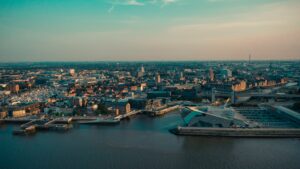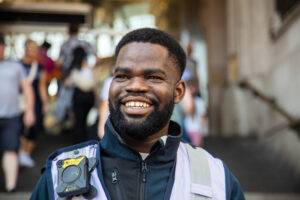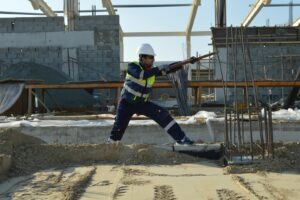The prosperity gap between places is once again being exposed as areas attempt to recover from recession and cutbacks. But economic growth isn’t the only option, says Sarah Longlands
Over the last year, CLES has been working with 15 local authorities across the UK, helping them to understand the resilience of their areas and to test a new model that we have developed.
Based on this research, we have just launched our conclusions in a new publication, Productive Local Economies: Creating Resilient Places. It sheds new light on the challenges local areas face and underlines why local economic development and regeneration are more important then ever.
Understanding resilience is about understanding the ability of an area to respond effectively to the challenges it faces; what enables some areas to respond from shocks, whether they are economic, social or environmental, while others falter and decline? In order to understand resilience better, CLES carried out international research with the Norfolk Charitable Trust, resulting in the creation of the place resilience model.
Its purpose is to help areas answer pressing questions such as: how vulnerable is my locality to public sector cuts?; if our major employers close or leave the area, how will we support our residents to find work and remain in the community?; many of our residents are commuters – how can we support local economic development?; we find it difficult to attract inward investment and encourage business start ups, what else can we do?
The model reconceptualises an area’s local economic territory by recognising the importance of the public and social economies.
Traditionally, economic development and regeneration have focused solely on the importance of the private sector economy. The private sector is seen as the engine of growth, and economic growth a prerequisite to a resilient and successful place.
Places without economic growth are failing and as a result, find themselves under continuous pressure to avoid falling further behind. These areas are often highly reliant on the public sector to support jobs and investment.
This constant struggle to catch up and transfer jobs to the private sector is at the heart of the government’s ambitions to ‘rebalance’ the economy. For some areas, the goal of rebalancing is simply not going to be realised and the ambition to catch up with so-called success stories is doomed from the start as the race to increase economic growth simply widens the gap further rather.
This is not about managed decline but rethinking what we mean by success, what we mean when we talk about creating ‘better’ places. The CLES model helps to explore what a different vision of place success might be because it recognises the importance, not only of the commercial economy plays, but also the role of the public and the social economies.
The resilience tool starts from the assumption that the ability of a place to be resilient and to respond effectively to change arises from the strength of the relationships that exist between the public, commercial and social networks. If these relationships are weak, an area is likely to be vulnerable to change and sudden economic, social and environmental shocks. However, where they are strong and organisations and individuals work well together, then the ability of the area to respond is likely to be stronger.
SUCCESS WITHOUT ECONOMIC GROWTH
We need to rethink our approach to economic development and recognise you can have a successful place which isn’t necessarily growing. For too long, economic development has been synonymous with economic growth. However, it has been long recognised that growth is limited in that it only refers to an increase in quantity, for example more jobs, more brownfield land, more goods, more services.
Development is different and, to quote Matt Kane and Peggy Sand’s Economic Development: What Works at the Local Level, ‘implies a change in character or structure, it refers to a qualitative shift in resource use, labour force skills, production methods, marketing measures, income distribution and financial capital arrangements’.
Economic growth is important and we need it in our communities more than ever, but we also need to recognise that not all areas will grow at the same time or have the same competitive advantages and that some areas may never grow at all. Therefore, what is the alternative vision for what constitutes a successful place if growth is difficult? This question is only going to become more pressing in a time when resources for economic development and regeneration are scarce.
Traditionally, when faced with deprivation, unemployment and falling land values, the approach is fairly standard and is focused on growth. However, for economic development to work you may also need to ask different questions. For example, if you ask what can we do to create a successful place where people want to live, where there is a good quality of life, good schools and services, then your first port of call might be very different.
The resilience model enables you to contemplate a different kind of success because it recognises the social and public economies have an important role to play, for example growth in the quality of services such as schools and health facilities through the public economy, or in the level of community and social action – what you might call Big Society.
DELIVERING A MORE RESILIENT ECONOMY
There are a number of ways in which a more resilient economy might be possible, including:
• Getting the balance right between strategy and opportunity – while economic development needs to be ready to take up opportunities and be open to possibility, it is still important to have a robust evidence base and a carefully thought out strategy which is clear about long-term goals and aspirations
• Avoid spatial blindness – economic development often works in isolation from spatial planning. Spatial planning provides an understanding of the provision of land available for jobs, housing, infrastructure into the future, this is the blueprint for any economy and planners and economic development professionals must work together to establish a clear vision for the future
• Understanding cause and effect – economic development can be an inexact science. Often there are strong assumptions about the types of outcome that will be achieved as a result of a particular initiative being developed. In reality the degree to which inward investment generates sustainable jobs or business infrastructure results in new investment are rarely easily to predict
• Getting your networks operating effectively – at the heart of the place resilience model is the idea that relationships and linkages between people in your area is vital for resilience. Where these links are missing within or between the public, commercial or social sector then economic resilience is made that bit harder.


















Leave a Reply